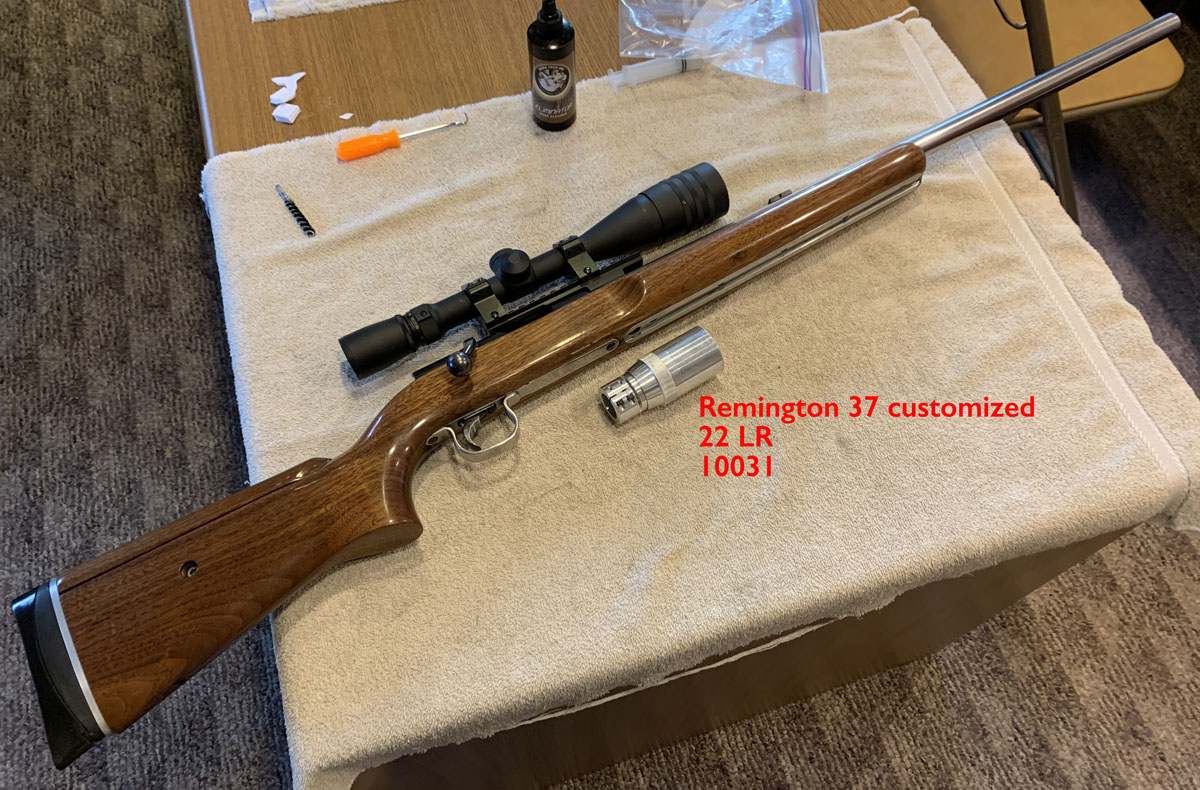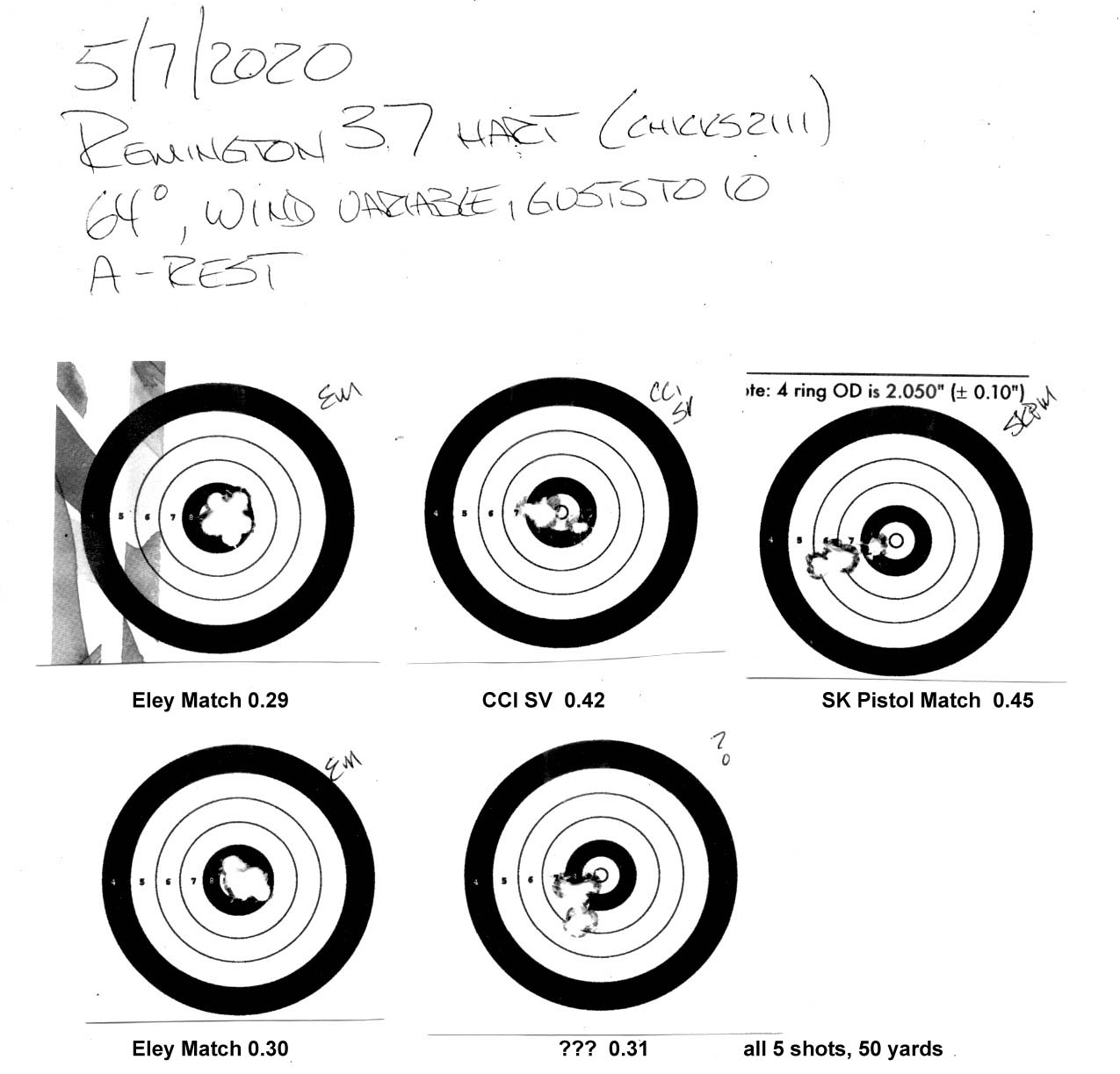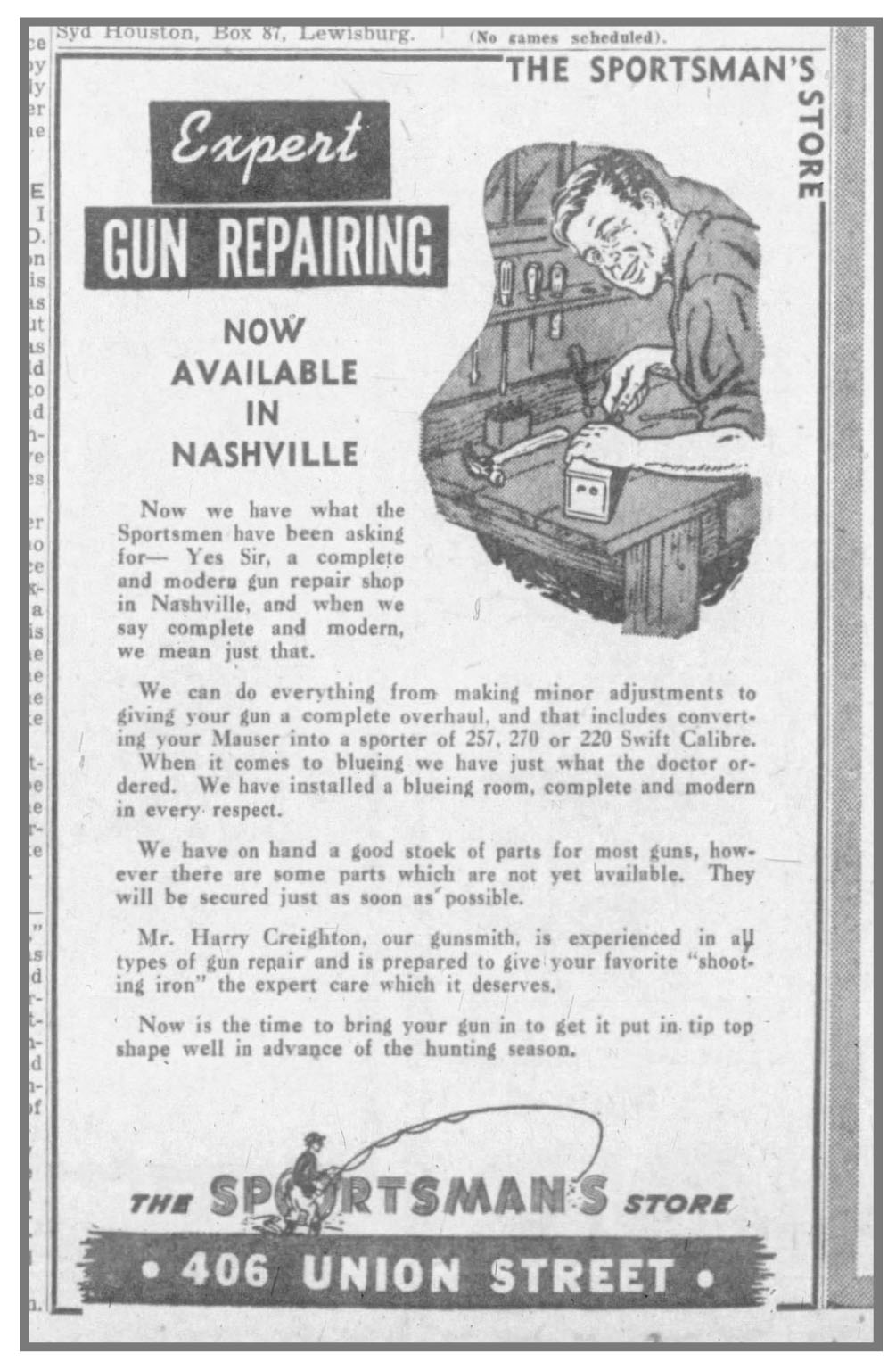Some Hal Hartley/Harry Creighton creations - 02/06/12 08:18 PM
My friend and former business partner, Harry Creighton, of Nashville, TN did the metal work on these rifles, and Hal Hartley of Lenoir, NC did the stocks. Harry used Douglas barrels and reamers he purchased from F.K. Elliot of Ramona, CA. Shilen, Hart and Buhmiller barrels were optional.
All but one of the rifles are built on Winchester Model 1886 High Wall actions. The 6mm/.225 uses a coil hammer spring, as opposed to the flat springs in the other rifles. The other action is taken from a Sharps Borschardt .45-70 musket. All feature bushed firing springs, with the pin portion of the striker made from heavy piano wire and virtually unbreakable.
All but two are stocked in maple, which Hal harvested himself from the North Carolina mountains, and are torched to bring out the contrast in the grain. The other two are walnut, from blanks purchased from Flaig's, Millvale, PA. All are made with Niedner steel checkered buttplates and pistol grip caps.
They are shown in the order in which acquired, the first obtained in 1958 and the last shortly before Hal Hartley's death, in the early 1980's. Hal died in 1984 of a stroke and Harry Creighton died a year later, in 1985, of a heart attack.
.219 Ackley Improved Zipper
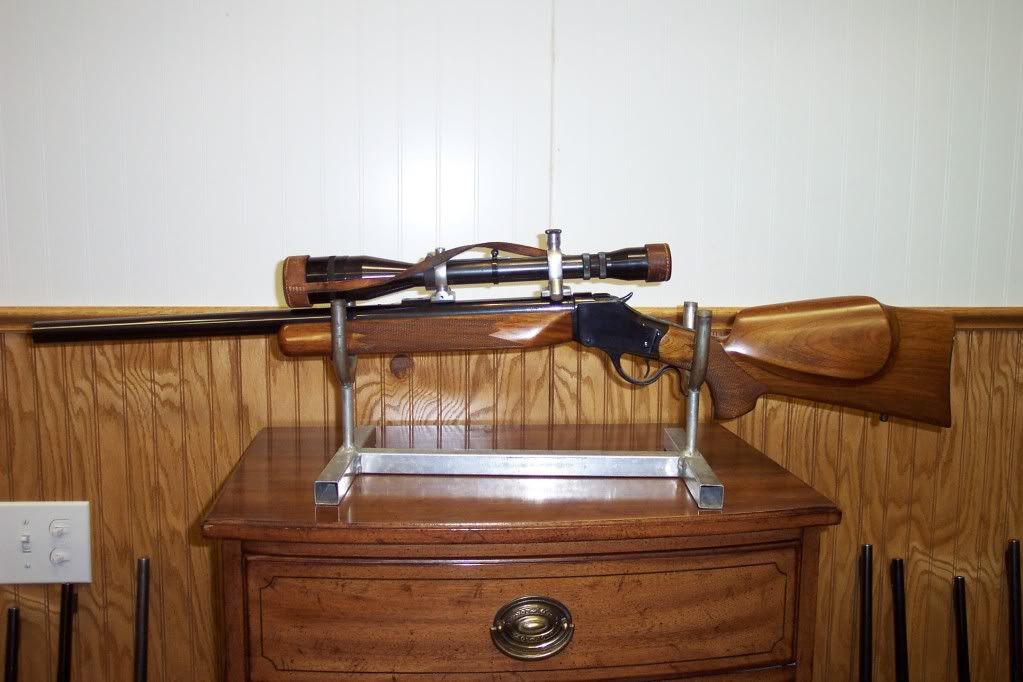
.218 Bee
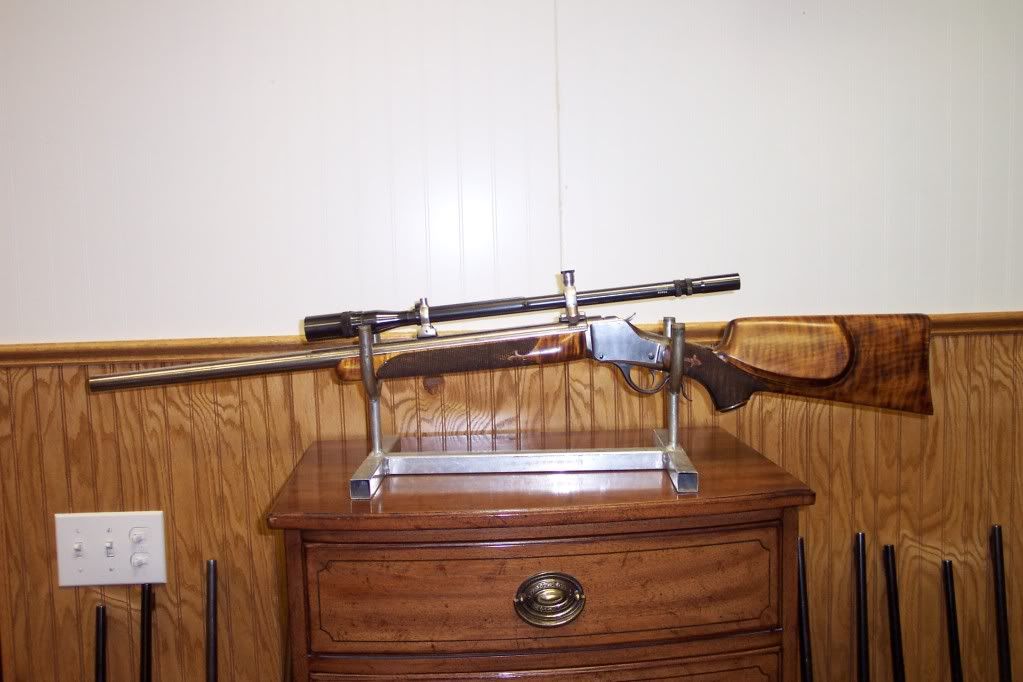
.250-3000R
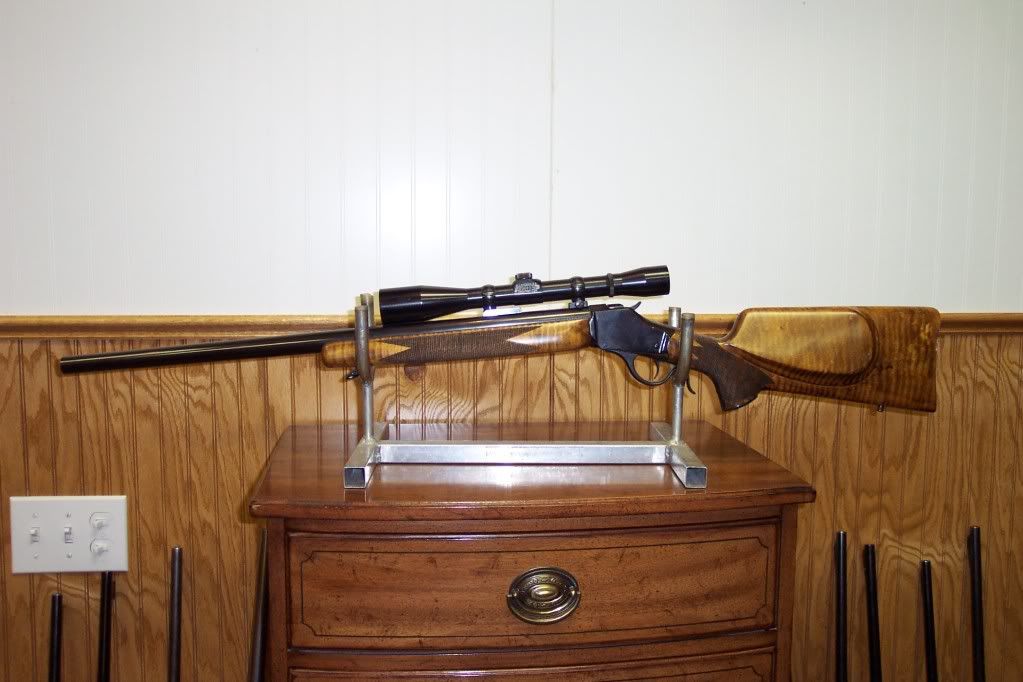
.25 Ackley Improved Krag
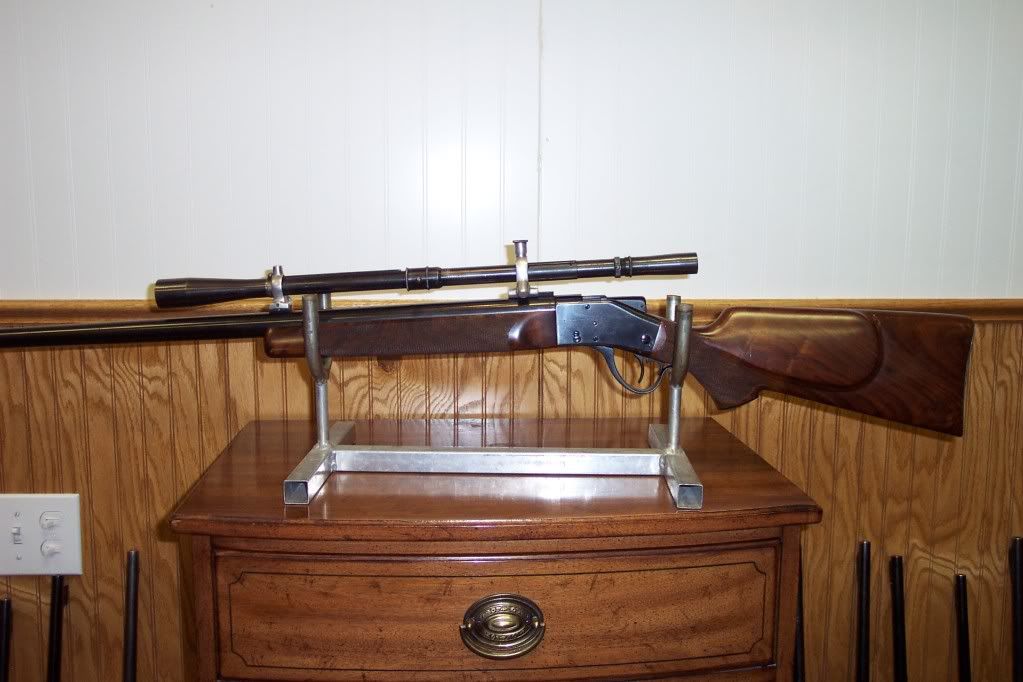
6mm/.225 Winchester

.30-40 Krag

7X57 R
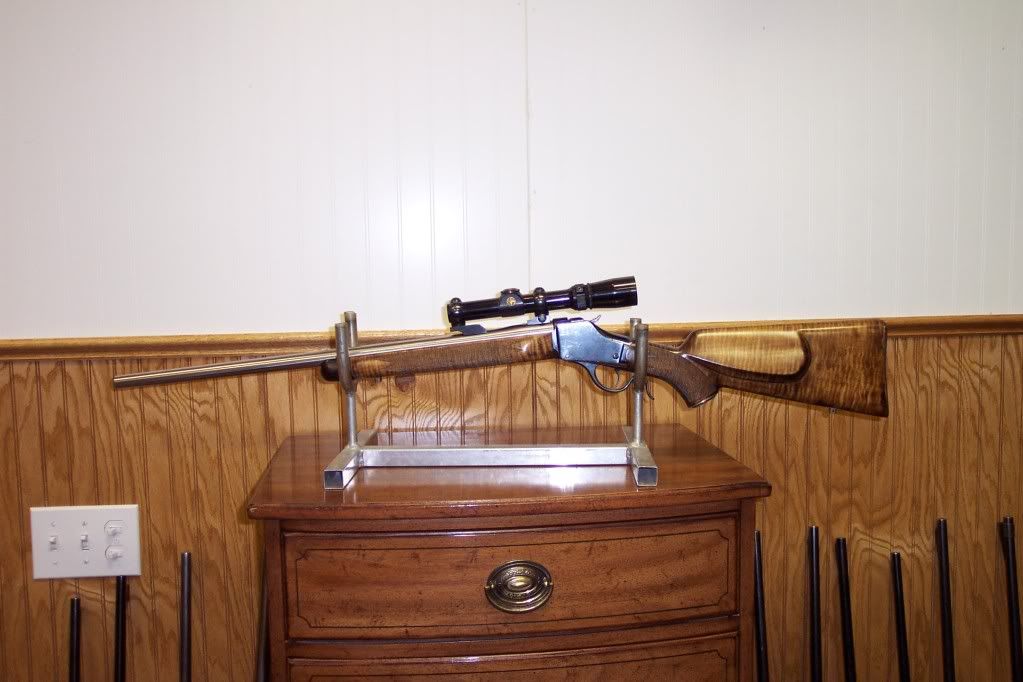
All but one of the rifles are built on Winchester Model 1886 High Wall actions. The 6mm/.225 uses a coil hammer spring, as opposed to the flat springs in the other rifles. The other action is taken from a Sharps Borschardt .45-70 musket. All feature bushed firing springs, with the pin portion of the striker made from heavy piano wire and virtually unbreakable.
All but two are stocked in maple, which Hal harvested himself from the North Carolina mountains, and are torched to bring out the contrast in the grain. The other two are walnut, from blanks purchased from Flaig's, Millvale, PA. All are made with Niedner steel checkered buttplates and pistol grip caps.
They are shown in the order in which acquired, the first obtained in 1958 and the last shortly before Hal Hartley's death, in the early 1980's. Hal died in 1984 of a stroke and Harry Creighton died a year later, in 1985, of a heart attack.
.219 Ackley Improved Zipper

.218 Bee

.250-3000R

.25 Ackley Improved Krag

6mm/.225 Winchester

.30-40 Krag

7X57 R


